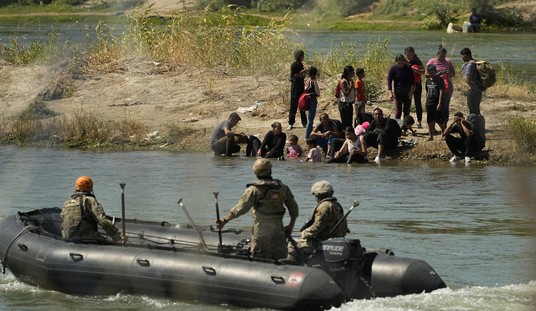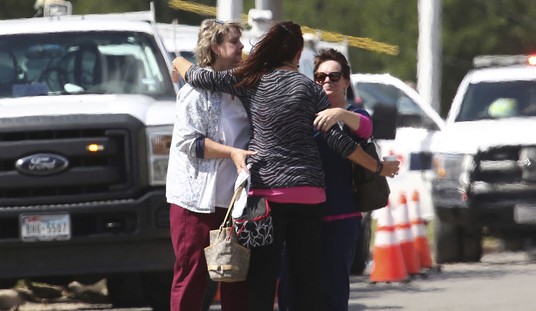
Today’s entry from the RedState Department of History deals with a lesser-known story involving American troops during the First World War — many thousands of miles from where so many Doughboys were engaged in combat against Germany.
Today marks the 99th anniversary of the Battle of Ambos Nogales, or “the battle of both Nogales”. It refers to two communities, one on either side of the border between the United States and Mexico, which were once separated by a single street.
Nogales, Arizona and Nogales, Sonora, Mexico, were once separated by International Street, a boulevard by which citizens of either nation could freely cross from one side to the other. But tensions between the nations had been raised after the public release of the Zimmerman Telegram, a diplomatic communication in which Imperial Germany encouraged Mexico to invade the United States and which served as casus belli for America to enter World War I.
The Americans had even gone so far as to accuse Germany of shipping advisors to Mexico to encourage invasion and had turned back an attack by Pancho Villa at Columbus, New Mexico in 1915. Two previous skirmishes at Nogales in 1913 and 1915 had involved American troops when firing between Mexican factions crossed the border.
But on August 27, 1918, the situation turned much more violent. On that day, a Mexican carpenter named Zeferino Gil Lamadrid was headed back toward the Mexican side of the border while carrying a parcel. A U.S. Customs official ordered Lamadrid to stop so he could inspect the parcel, while Mexican officials on the other side of International Street waved him across. Not knowing what to do, Lamadrid stopped in the middle of the street. At that point, the situation escalated:
“At this point, a U.S. Infantryman raised his Springfield rifle to encourage his return. In the midst of the ensuing commotion a shot was fired, and the carpenter dropped to the ground. Thinking that the man had been shot, a Mexican Customs Officer grabbed his pistol and opened fire on the U.S. guards, wounding an army private in the face. A U.S. Inspector drew his revolver and returned fire, killing two Mexican Customs Officers. Shaken but unhurt, Gil Lamadrid jumped up and sprinted down a nearby street. As the sound of gunfire rattled the neighborhood, citizens on the Mexican side of the border ran to their homes and picked up rifles to join the Mexican troops.”
That brought a swift reaction from the Americans. Two years previously, President Woodrow Wilson had authorized the “Punitive Expedition” into Mexico under General John Pershing after a series of border incursions, and with tensions running high, American troops were already in the area. Soldiers of the U.S. 35th Infantry Regiment were stationed in Nogales and once reinforcements from the 10th U.S. Cavalry arrived, they went into action.
Infantry and dismounted cavalry crossed International Street and headed for heights east of the two towns on the Mexican side of the border. A combined assault took the hills and the placement of a machine gun on the American side of the border eventually helped end the fighting.
Mayor Felix Penaloza attempted to stop the fighting by tying a white handerchief to his cane before trying to cross International Street to the American side, but was fatally wounded by a shot from the American side of the border. The Mexicans raised a white flag late in the evening for the purposes of obtaining a cease-fire.
As part of the cease-fire, officials agreed to build a two-mile long fence down the middle of International Street – the first wall on the border between the two nations. The eventual long-term result of the battle, from the American point of view, was the creation of the U.S. Border Patrol in 1924.
Other historical events on this date:
August 27, 1859 – Edwin Drake drills the first oil well in history in Titusville, Pennsylvania. The inventor of the modern drilling process would drill only two more such wells in his career.
August 27, 1945 – the Allied armada assembles in Tokyo Bay with the surrender of Japan imminent. Eventually the fleet would include 23 aircraft carriers, 12 battleships, 26 cruisers, 116 destroyers and escorts, 12 submarines and 185 other vessels – believed to be the greatest armada in history.
Happy Sunday and enjoy today’s open thread!













Join the conversation as a VIP Member